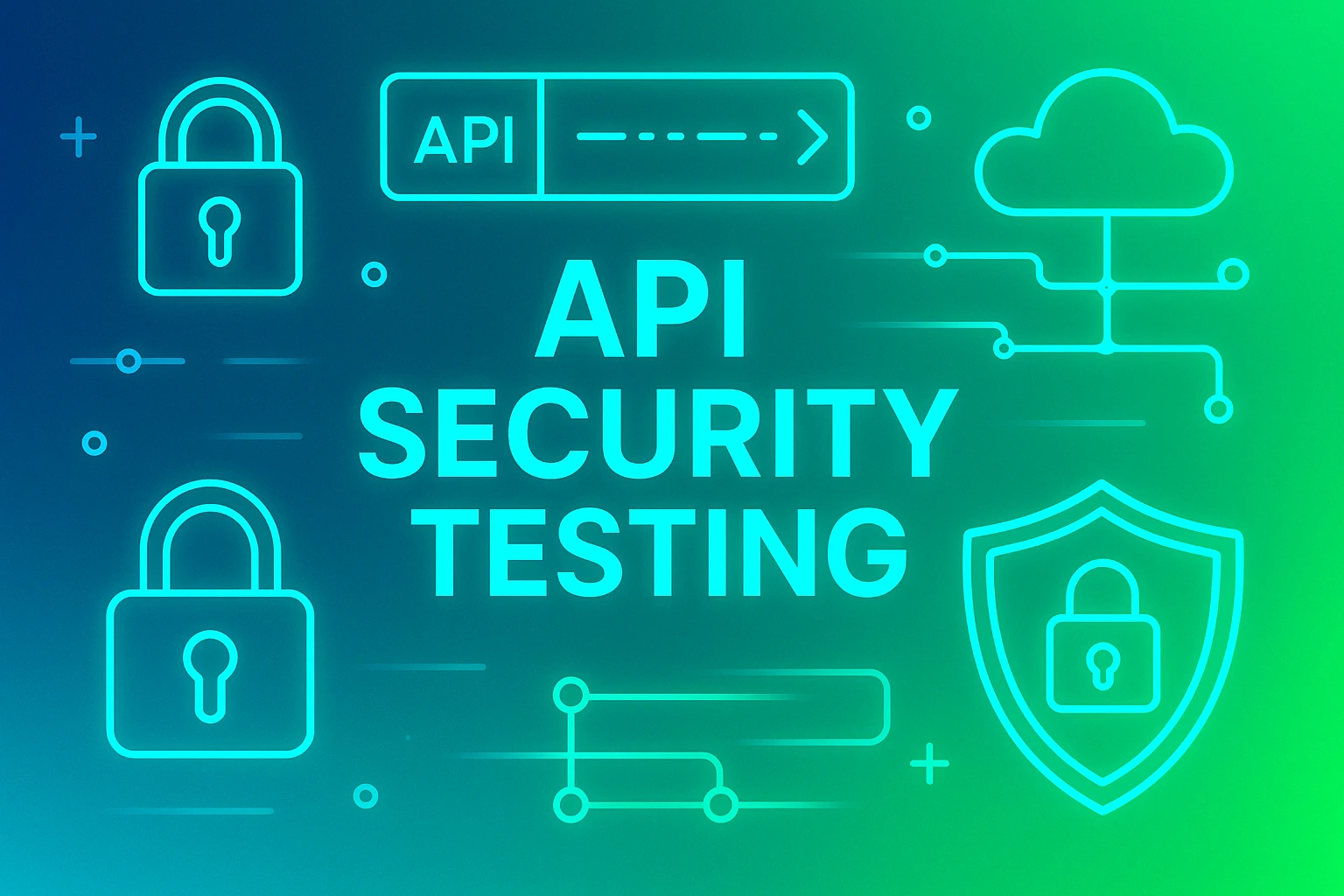
How a BDE Connects Business Vision With Technology
How a BDE Connects Business Vision With Technology Kumkum Kumari 21/11/2025At Speqto, we work with organizations that are constantly evolving entering new markets, scaling operations, or […]

 “APIs have become the backbone of modern applications, handling everything from user authentication to payment processing. Yet these same interfaces represent the largest attack surface for cybercriminals—OWASP data shows API-related breaches jumped 681% in 2024 alone. Unlike traditional web security, API vulnerabilities hide in business logic, authentication flows, and data exposure patterns that standard scanners miss.
“APIs have become the backbone of modern applications, handling everything from user authentication to payment processing. Yet these same interfaces represent the largest attack surface for cybercriminals—OWASP data shows API-related breaches jumped 681% in 2024 alone. Unlike traditional web security, API vulnerabilities hide in business logic, authentication flows, and data exposure patterns that standard scanners miss.
This post outlines how to build a comprehensive API security testing program that catches critical flaws before they reach production, using both automated tools and manual techniques proven at scale.
Modern APIs face unique security challenges: broken authentication mechanisms, excessive data exposure, inadequate rate limiting, and business logic flaws that allow privilege escalation. Traditional web scanners struggle with stateful API flows, complex authentication schemes, and the nuanced business context required to detect logical vulnerabilities.
Speqto implements a layered testing strategy combining static analysis, dynamic scanning, and manual verification. We integrate security checks directly into CI/CD pipelines, use OpenAPI specifications to generate comprehensive test cases, and employ context-aware tools that understand business logic. This approach catches both technical vulnerabilities and authorization flaws that could lead to data breaches.
• OWASP ZAP—automated scanning with API-specific test cases and fuzzing capabilities.
• Burp Suite Professional—manual testing for complex authentication flows and business logic flaws.
• Postman + Newman—automated security test collections executed in CI/CD pipelines.
• 42Crunch API Security Audit—static analysis of OpenAPI specifications for security misconfigurations.
• Traceable API Security—runtime protection and continuous testing based on live traffic patterns.
• Custom Python Scripts—targeted tests for specific business logic and authorization scenarios.
• Authentication & Authorization: Test token validation, session management, role-based access controls, and privilege escalation paths.
• Input Validation: Verify parameter validation, content type enforcement, and protection against injection attacks (SQL, NoSQL, LDAP, OS command).
• Data Exposure: Check for excessive data in responses, sensitive information in error messages, and unintended information disclosure.
• Rate Limiting: Validate throttling mechanisms, abuse prevention, and denial-of-service protections.
• Business Logic: Test workflow integrity, transaction boundaries, and application-specific security rules.
• Start with OpenAPI specs: Use API definitions to generate comprehensive test cases and ensure complete endpoint coverage.
• Test both authenticated and unauthenticated states: Many vulnerabilities only appear with specific permission combinations.
• Focus on business logic: Automated tools miss context-specific flaws—invest in manual testing of critical user journeys.
• Test API versioning: Ensure deprecated versions are properly secured or disabled.
• Monitor in production: Implement runtime API security monitoring to catch attacks that bypass pre-deployment testing.
• Integrate early: Run security tests on every commit; catching issues in development is 10x cheaper than post-deployment fixes.
The OWASP API Security Top 10 provides a roadmap for comprehensive testing. Priority areas include Broken Object Level Authorization (BOLA), Broken Authentication, Excessive Data Exposure, and Security Misconfiguration. Each category requires specific testing approaches—for example, BOLA testing involves manipulating object identifiers to access unauthorized resources, while Excessive Data Exposure requires analyzing response payloads for sensitive information leakage.
During a recent FinTech client audit, our team discovered a critical authorization flaw that allowed users to access other customers’ transaction histories by simply modifying account IDs in API requests. Automated scanners missed this because it required valid authentication tokens and understanding the business context. Manual testing with different user roles revealed the vulnerability, leading to immediate remediation before the API launch.
Organizations implementing comprehensive API security testing typically see a 75% reduction in production security incidents, 60% faster vulnerability remediation times, and improved compliance scores. Early-stage testing integration reduces security debt by preventing vulnerabilities from reaching production, while continuous monitoring catches emerging threats in real-time.
Diagram: API Development → Static Analysis → Dynamic Testing → Manual Verification → CI/CD Integration → Runtime Monitoring. Alt text: “Comprehensive API security testing pipeline protecting digital perimeter.”
API security testing requires a multi-layered approach that combines automated tools with human expertise to catch both technical vulnerabilities and business logic flaws. By integrating security testing throughout the development lifecycle—from design-time OpenAPI analysis to runtime monitoring—organizations can build robust defenses against the evolving API threat landscape.
Ready to strengthen your API security posture? Contact Speqto’s security experts for a comprehensive API security assessment and testing strategy tailored to your infrastructure.

How a BDE Connects Business Vision With Technology
How a BDE Connects Business Vision With Technology Kumkum Kumari 21/11/2025At Speqto, we work with organizations that are constantly evolving entering new markets, scaling operations, or […]

Apache JMeter Demystified: Your 7-Stage Blueprint for a Seamless First Performance Test
Apache JMeter Demystified: Your 7-Stage Blueprint for a Seamless First Performance Test Megha Srivastava 21 November 2025 In the intricate world of software development and deployment, ensuring a robust user experience is paramount. A slow application can quickly deter users, impacting reputation and revenue. This is where Apache JMeter emerges as an indispensable tool, offering […]

STRIDE Simplified: A Hands-On Blueprint for Pinpointing Software Threats Effectively
STRIDE Simplified: A Hands-On Blueprint for Pinpointing Software Threats Effectively Megha Srivastava 21 November 2025 In the intricate landscape of modern software development, proactive security measures are paramount. While reactive incident response is crucial, preventing vulnerabilities before they become exploits is the hallmark of robust software engineering. This is where threat modeling, and specifically the […]

From Static to Streaming: A Practical Developer’s Guide to Real-time Applications Using GraphQL Subscriptions
From Static to Streaming: A Practical Developer’s Guide to Real-time Applications Using GraphQL Subscriptions Shakir Khan 21 November 2025 The Paradigm Shift: From Static to Streaming Experiences In an era where user expectations demand instant gratification, the web has rapidly evolved beyond its static origins. Today, a modern application’s success is often measured by its […]

The TanStack Query Edge: Deep Dive into Advanced Caching for Optimal Application Speed
The TanStack Query Edge: Deep Dive into Advanced Caching for Optimal Application Speed Shubham Anand 21 November 2025 In the relentless pursuit of seamless user experiences and lightning-fast web applications, data management stands as a formidable challenge. Modern front-end frameworks demand intelligent solutions to handle asynchronous data, and this is precisely where TanStack Query (formerly […]